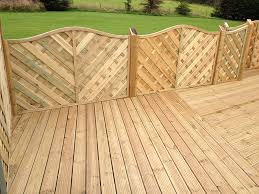How to Choose the Right Panel Fencing for Your Home and Garden
When it comes to enhancing the security, privacy, and aesthetic appeal of your home and garden, panel fencing is a popular and practical choice. With various options available, selecting the right type can seem daunting. Here’s a comprehensive guide to help you make an informed decision.
Understanding Panel Fencing
Panel fencing consists of pre-made panels that are attached to posts and set into the ground. This type of fencing is versatile, available in various materials, and suitable for different applications. Here’s how to choose the best option for your needs.
1. Determine Your Needs
Before selecting panel fencing, consider the purpose it will serve. Are you looking for increased privacy, enhanced security, or simply an attractive boundary? Identifying your primary goal will help you choose the most suitable material and style.
2. Choose the Right Material
Panel fencing comes in several materials, each offering unique benefits:
Wood: Traditional and versatile, wooden panels can be stained or painted to match your home’s exterior. They provide a natural look but require regular maintenance to prevent rot and weather damage.
Vinyl: Low-maintenance and durable, vinyl fencing is resistant to weather conditions and pests. It’s available in various styles and colours, but it may lack the natural charm of wood.
Metal: Options like aluminium or steel offer durability and a modern look. Metal fences are generally more secure but can be prone to rust if not properly coated.
Composite: Made from a blend of wood fibres and plastic, composite fencing combines the aesthetics of wood with the durability of plastic. It’s low-maintenance and resistant to weathering.
3. Consider the Style
Panel fencing is available in various styles, each contributing differently to your garden’s appearance:
Closeboard: Offers privacy and security with its overlapping vertical boards. It’s ideal for creating a solid boundary.
Lap Panel: Features horizontal panels, often with a slight gap between them. It’s a popular choice for a more open and less formal look.
Picket: Typically used for decorative purposes, picket fences have vertical boards with spaces between them. They are not ideal for privacy but add charm to your garden.
Trellis: Incorporates latticework at the top of the fence panel, providing a more decorative element and allowing climbing plants to grow.
4. Measure and Plan
Accurate measurements are crucial when installing panel fencing. Measure the length of the area you want to fence and determine the number of panels needed. Consider the height of the panels; taller fences offer more privacy but may require additional planning for installation.
5. Installation Considerations
Proper installation ensures the longevity and effectiveness of your panel fencing:
Foundation: Ensure that fence posts are securely set in concrete to prevent movement and instability.
Maintenance: Choose a material that fits your maintenance preferences. Wood requires regular treatments, while vinyl and metal are generally easier to maintain.
Local Regulations: Check with your local council regarding any restrictions or permits required for installing panel fencing.
Conclusion
Selecting the right panel fencing involves assessing your needs, choosing the appropriate material and style, and ensuring proper installation. By understanding these factors, you can enhance your home’s security, privacy, and visual appeal effectively. Whether you opt for classic wood, modern vinyl, durable metal, or innovative composite, the right choice will provide lasting benefits and complement your garden beautifully.
For further assistance with choosing and installing panel fencing, consult with a professional fencing contractor to ensure your new fence meets all your requirements.





Comments
Post a Comment